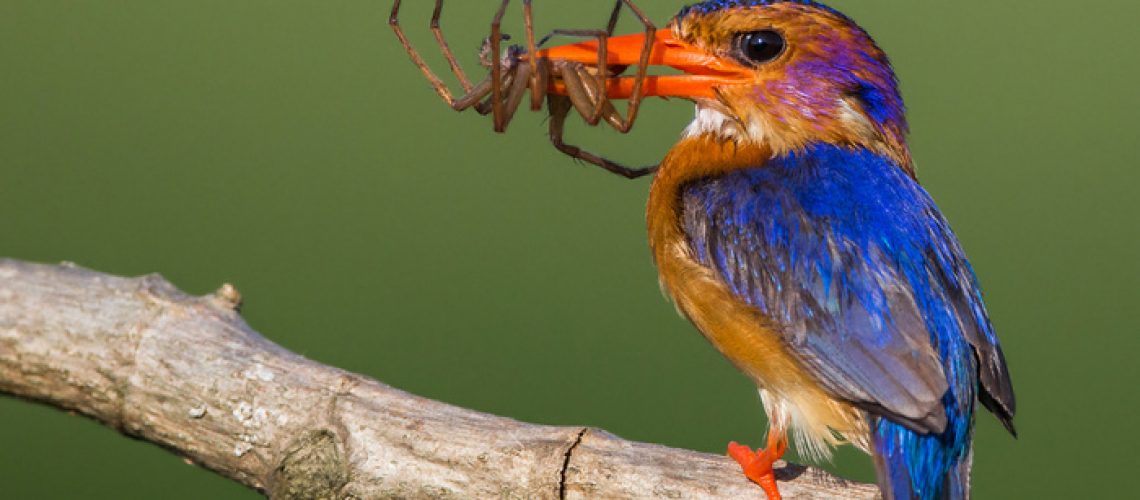As a part of the Lush landscape, the African Pygmy Kingfisher’s name belies its behaviour. Often Kingfishers are associated with or considered as aquatic birds, but this little guy is not bound to water at all; they are what is referred to as ‘terrestrial’ Kingfishers.
They live, breed and feed in woodland, coastal forest and savanna. Interestingly, their diet doesn’t include much fish at all! Instead, they feed on mostly insects like grasshoppers, praying mantis, cockroaches, crickets and worms. Their diet though is not limited to invertebrates; they have been seen snacking on geckos, spiders, frogs and even small crabs.
As the smallest of all African Kingfishers, these birds measure a mere 13cm in full height. Most of their body is taken up by their impressive beaks. With a shocking strike of bright blue plumage on its crown and back, it is also often confused with the Malachite Kingfisher. The African Kingfisher does not move or nest in groups or flocks but rather, in singles or pairs. As a characteristically shy bird whose behaviour is surreptitious, they like to rest during the daylight hours. The reason for their daytime docility is thought to be a protection mechanism and so as not to attract the attention of predators. Wildlife photographers and birders have witnessed this peculiar behaviour by observing the African Pygmy Kingfisher sitting motionless and quiet on its perch for hours on end. Needless to say, this presents the perfect opportunity for birders to photograph these birds but with that comes another challenge- trying to photograph the Kingfisher in flight!
With a preference for hunting under the cloak of dusk, the African Pygmy Kingfisher is quite a gruesome feeder. Rather than swallowing their prey whole, as many birds do, they will crush the prey with their beak or dash it against their perch before consuming.
The hunting of prey is a key factor in the coupling process. Once a male has caught his prey, he will then call out to the female to coax her over to him. Once she is in his presence, he then bestows a most beautiful gift upon her (the day’s catch) in a bid to win her affections. If she likes him, then the coupling begins in earnest and home building starts. These birds put a lot of time and energy into building their burrows, and they do this from scratch. Once they have selected the desired location, either in sand or soil banks, the male then begins to fly at speed towards the sand or soil to create a depression or marker. Once the spot is marked, he continues this action whilst removing soil with his claws at the same time.
Keep your eyes open as you leave your home at Lush for a meander through the greenery of Elaleni and you might just spot a flash of blue before your eyes. If not, search around the mounds of soil on the grounds, and perhaps you’ll spot a cute little African Pygmy Kingfisher burrow.


